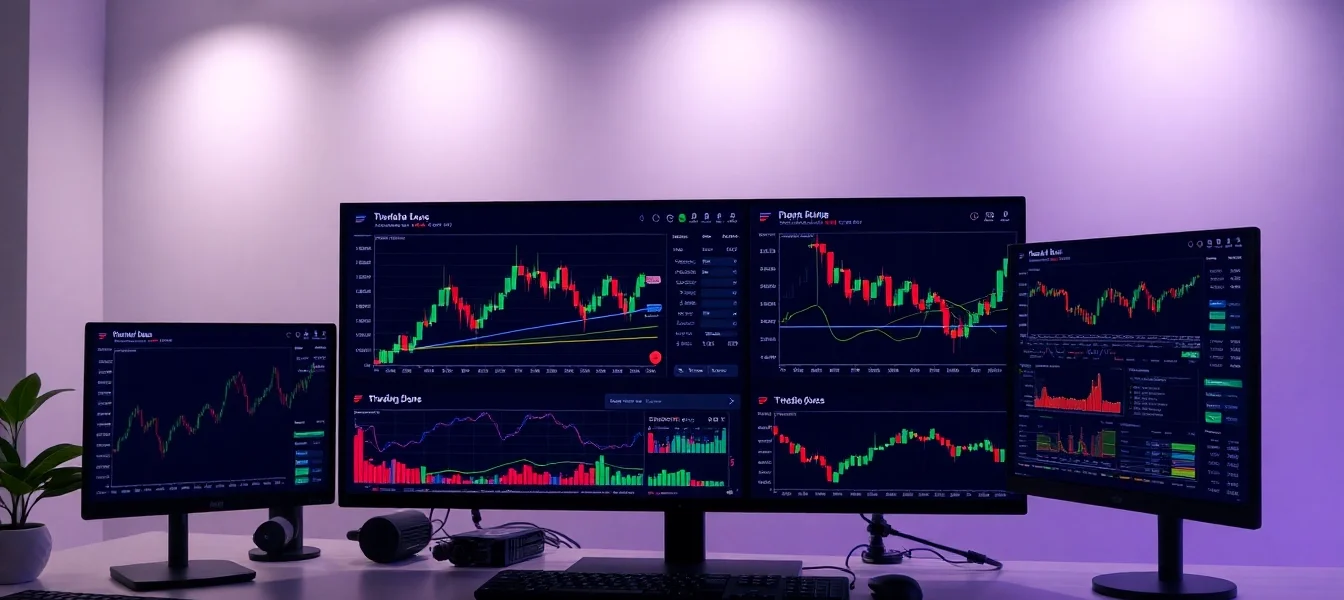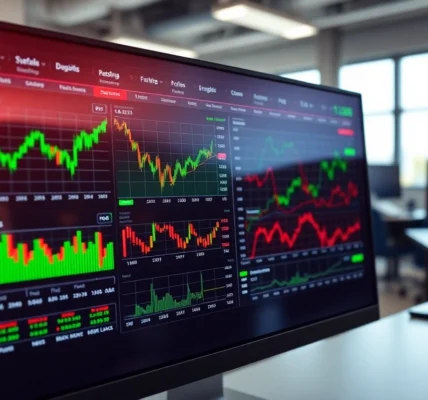Introduction to Trading View and Its Core Features
In today’s fast-paced financial markets, having access to powerful charting, analysis, and trading tools is essential for both novice and professional traders. trading view has established itself as a comprehensive platform that consolidates market data, technical analysis, social collaboration, and trading functionalities into a single user-friendly interface. Trusted by millions worldwide, Trading View offers an unparalleled environment for observing market trends, evaluating investment opportunities, and executing trades efficiently.
Whether you’re analyzing stocks, cryptocurrencies, forex, or commodities, Trading View provides you with a rich set of features that adapt to various trading styles—from day trading to long-term investing. Its core appeal lies in advanced charting tools, customizable layouts, real-time alerts, and a vibrant community of traders sharing ideas, strategies, and insights, making it a holistic ecosystem for modern trading enthusiasts.
Setting Up Your Trading View Profile and Custom Layouts
Creating and Customizing Charts for Better Insights
Setting up your charts efficiently is fundamental to effective analysis. Trading View allows you to create multiple chart layouts tailored to your preferred trading styles and asset classes. Start by selecting your desired market symbol, then utilize the extensive library of technical indicators such as Moving Averages, RSI, MACD, Bollinger Bands, and Fibonacci retracements to enhance your analysis.
Customization extends to visual settings like color schemes, grid styles, and timeframes. Traders can save these configurations as templates for quick access across different assets or analysis sessions. For instance, a day trader might prefer a 5-minute chart with specific indicators, while a long-term investor might opt for daily or weekly views with different overlays. Efficiently customizing and saving your chart layouts enables faster decision-making and consistency.
Organizing Watchlists and Alerts for Efficiency
Keeping track of multiple assets is streamlined with Trading View’s watchlists and alerts. Create watchlists for specific sectors, asset classes, or personal portfolios, allowing instant monitoring of price changes and trading signals. Alerts can be set for price levels, indicator crossovers, or specific technical setups, notifying you via email or push notifications—ensuring you never miss critical market movements.
Proper organization of your watchlists and alerts not only improves your reaction time but also helps in maintaining a disciplined trading routine. For example, a trader focusing on cryptocurrencies can segment assets into different watchlists based on volatility levels or trading volume, enabling targeted and timely responses to market fluctuations.
Integrating Trading View with Other Platforms and Tools
Trading View offers multiple integrations with brokerage accounts, trading platforms, and third-party analytical tools. This connectivity streamlines your workflow, permitting you to execute trades directly from the platform or synchronize analysis across different applications. Many brokers support Trading View’s integration, offering seamless order execution without switching interfaces, saving valuable time during volatile trading conditions.
Additionally, Trading View can connect with external calendar apps, economic data feeds, and backtesting software, creating an all-encompassing trading environment. Such integrations are vital for traders looking to automate parts of their analysis or trading process, enhancing efficiency and reducing manual errors.
Advanced Trading View Techniques and Strategies
Using Technical Indicators for Precise Entry and Exit Points
Technical indicators are the cornerstone of systematic trading strategies. Trading View’s extensive library allows traders to combine multiple indicators—such as moving averages for trend identification and oscillators like RSI or Stochastic for overbought/oversold signals—to confirm trade entries and exits. For example, a common strategy might involve waiting for the price to cross above a 50-day moving average, coupled with RSI indicating an oversold condition, to signal a potential bullish entry.
Advanced traders utilize indicator divergence, volume overlays, and custom scripts (via Pine Script) to fine-tune their signals. Backtesting these indicators against historical data helps determine optimal parameters and enhances confidence in the strategy before real-time deployment.
Applying Drawing Tools for Technical Analysis
Drawing tools such as trend lines, Fibonacci retracements, channels, and support/resistance zones facilitate visual analysis and pattern recognition. Effective use of these tools enables traders to identify breakout levels, reversal zones, and consolidation phases. For instance, drawing a trendline on a downtrend and observing a break can signal a trend reversal. Similarly, Fibonacci retracement levels can help pinpoint potential bounce areas after a correction.
Combining drawing tools with indicators creates a comprehensive analysis framework, improving accuracy and decision-making confidence.
Backtesting Strategies Using Trading View’s Historical Data
Backtesting is essential for validating trading strategies before real deployment. Trading View’s platform allows users to apply their indicator combinations and trading rules to historic data, revealing past performance metrics like profitability, drawdowns, and win/loss ratios. This process helps identify weaknesses, optimize parameters, and adapt strategies to current market conditions.
By systematically evaluating strategies through backtesting, traders can develop robust approaches with higher probabilities of success and implement them with discipline in live markets.
Optimizing Your Trading Workflow with Trading View
Automating Alerts and Notifications to Stay Ahead
Automation enhances a trader’s responsiveness and minimizes emotional decision-making. Trading View’s alert system allows setting conditions based on price action, indicators, or drawing tools, which automatically trigger notifications. For example, you might set an alert for when a stock’s RSI crosses below 30, indicating an oversold condition suitable for a bounce trade.
Using these alerts, traders can monitor multiple assets simultaneously without constant oversight, ensuring timely entries, exits, and risk management actions.
Collaborating with the Trading Community
One of Trading View’s unique strengths is its social component. Investors and traders share ideas, technical setups, and fundamental analyses, fostering a collaborative environment. Interactive features include comment sections, live chatrooms, and sharing of custom scripts or templates.
Engaging with the community can provide valuable insights, alternative viewpoints, and validation of your own analysis. For novice traders, collaboration accelerates learning, while experienced traders benefit from diverse perspectives and validation of their strategies.
Analyzing Market Sentiment and Community Ideas
Sentiment analysis and idea sharing contribute to a holistic understanding of market conditions. By reviewing community ideas and trending discussions, traders can gauge prevailing market sentiment—whether bullish, bearish, or neutral—and adjust their strategies accordingly. This social analysis complements technical and fundamental analysis, providing a richer, multi-dimensional view of markets.
Measuring Performance and Continuous Improvement
Tracking Your Trading Metrics and Progress
Consistent review of trading performance is vital for growth. Using Trading View’s paper trading and custom annotation features, traders can log their trades, analyze profit-loss ratios, and identify recurring mistakes. Visual dashboards and exporting data for further statistical analysis facilitate a comprehensive review process.
Adjusting Strategies Based on Analysis Results
Data-driven adjustments improve long-term results. If analysis reveals a particular indicator combination underperforms during volatile markets, traders can refine or replace it. Regular backtesting and performance reviews help adapt strategies to evolving conditions, maintaining competitiveness.
Staying Updated with Market Trends and Platform Updates
Markets are dynamic, requiring traders to stay informed. Monitoring economic indicators, geopolitical news, and platform updates from Trading View ensures that analysis tools and strategies remain current. Utilizing Trading View’s news feed, economic calendar, and platform enhancements fosters a proactive trading approach.




